|
Literally
Lost the marbles as they fell out of my new noise machine
I got the idea after dropping a super-size bottle of old-age vitamin pills |
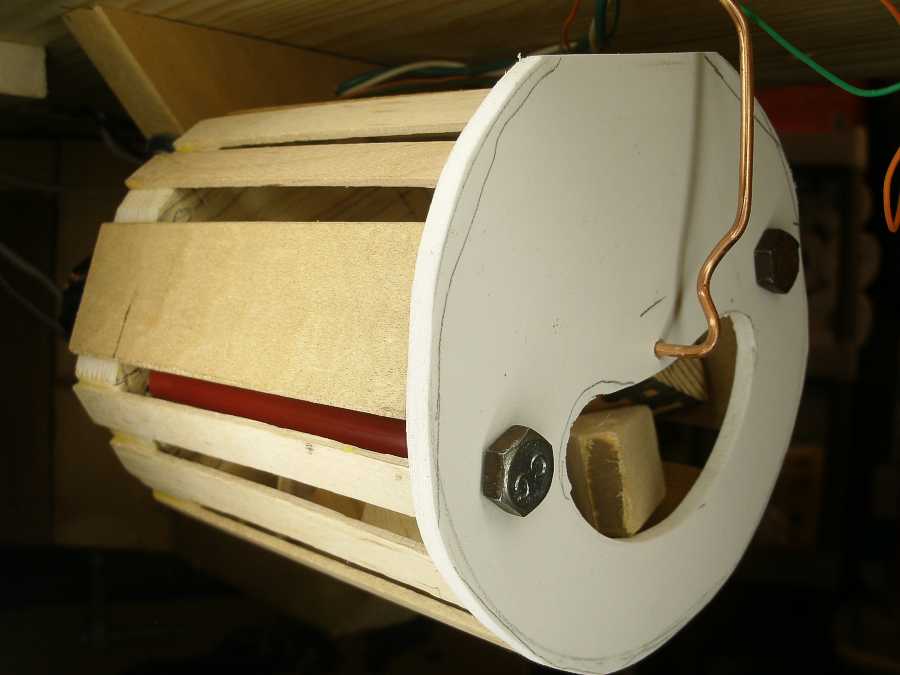
| A train rolls onto the floating pontoon bridge and its weight pushes it down in the make-believe blue water. |
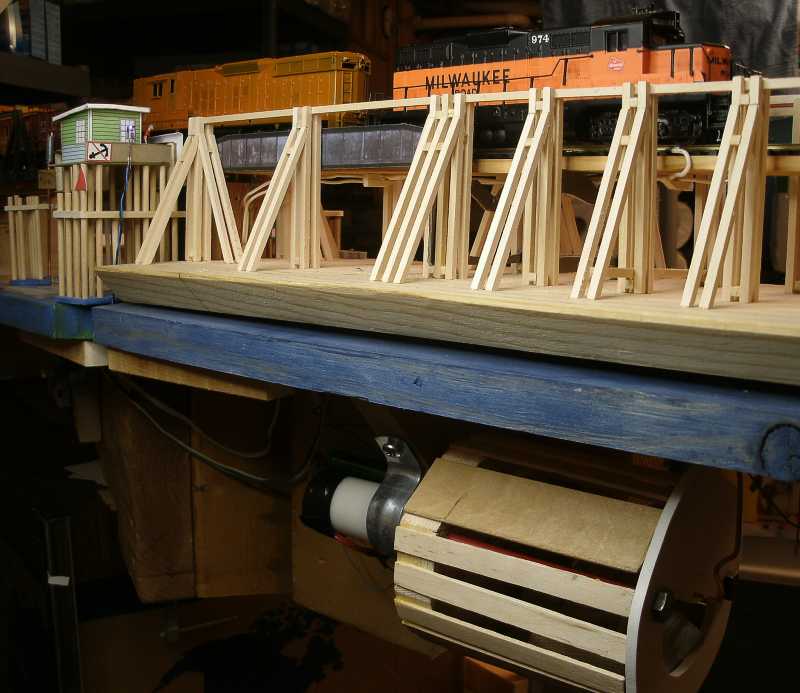
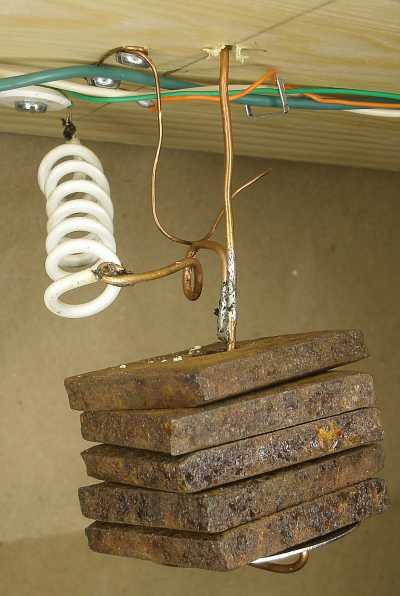 I had a home-made wire whisker switch to sense the bridge position
I had a home-made wire whisker switch to sense the bridge position
and power the gearmotor that tuns the drum at about 10 rpm.
I wanted the noise only when the ends of the bridge move up or down.
As the train moves onto the apron, the drum turms about a half turn.
Once the bridge has settled in the water and is level, I shouldn't need the noise.
The final noise is when the caboose leaves the bridge and the pontoon floats up 4 feet
as the train's weight rolls off the bridge.
Although, I have never heard a train go over any of the Milwaukee Road pontoon bridges,
those 4 bridges disappeared over 40 years ago.
I have never read of anyone describing the sounds made by these 300-foot long wood structures
as they bend and flex by 4 feet as a train passes over the water.
I can imagine squeaks and groans like a squeaky wood floor,
or a rusty door hinge, and nails and bolts threatening to pull out.
And a two-foot wave of water and / or slushy ice is displaced, too,
but I don't know how to make a sloshing sound without getting too messy.
(the original wave-making machine?)
|
A few weeks later, I replaced the whisker wire switch with homemade limit switches of two single throw contacts, held open at the upper limits of the bridge being up and down. The adjusting screws have much less maintenance than my original whisker wires and I get a longer run of the noise machine. |
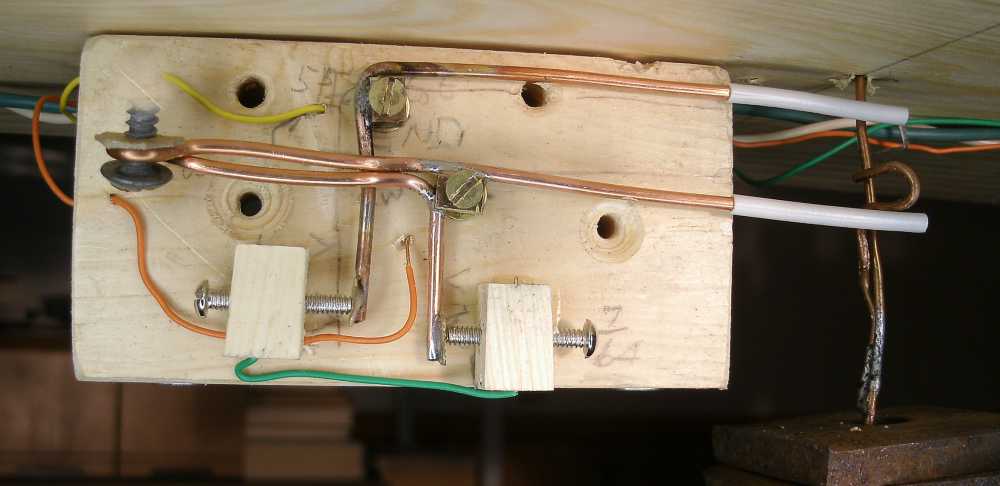
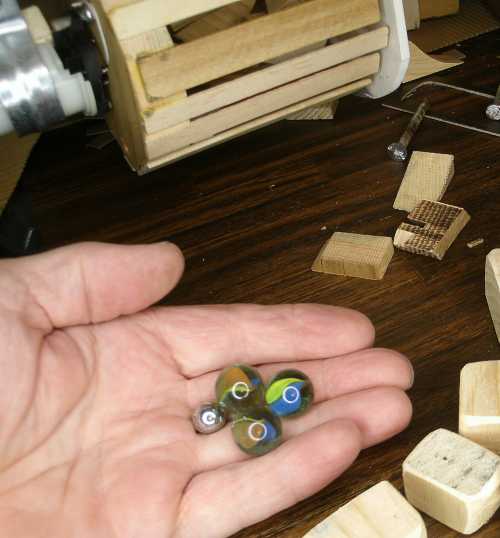 In a few days, I found all but one marble that had rolled back out the loading hatch
In a few days, I found all but one marble that had rolled back out the loading hatch
before I taped it shut.
They make a rapid light plunk as they roll between the tumbling wood blocks.
The drum is made of wood ice cream sticks and paint stirring paddles.
I figured if I wanted to make something sound like wood,
I should make it out of wood.
If I was good with electronic sound systems, I could record some real sounds from real bridges
and play them back.
My wood tumbler is like a rock tumbler, but this has plenty of open spaces to let the sound out.
Inside is wood blocks and rounded cubes and marbles and ball bearings.
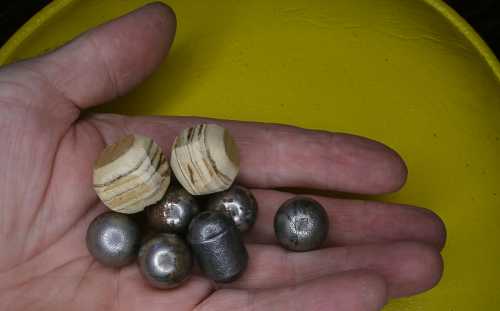 And it produces a random sound. Sometimes there is a quiet rumble,
And it produces a random sound. Sometimes there is a quiet rumble,
and sometimes these heavy ball bearings all tumble at once and almost shake the bridge.
Scary enough that I think the train has derailed.
In fact, I had a second train that derailed and tipped over four cars in the back room
and I couldn't tell the difference between that sound and a train going over this bridge at the same time.
|
The sound can be 'light' like tinker toy sticks tumbling, instead of a 12-inch beam groaning.
And as if the tumbler sound isn't enough, I added a thacker wacker ice cream stick If I really wanted to, I could add some spikes to the outside of the drum to strike different lengths of sticks to make a music box. |
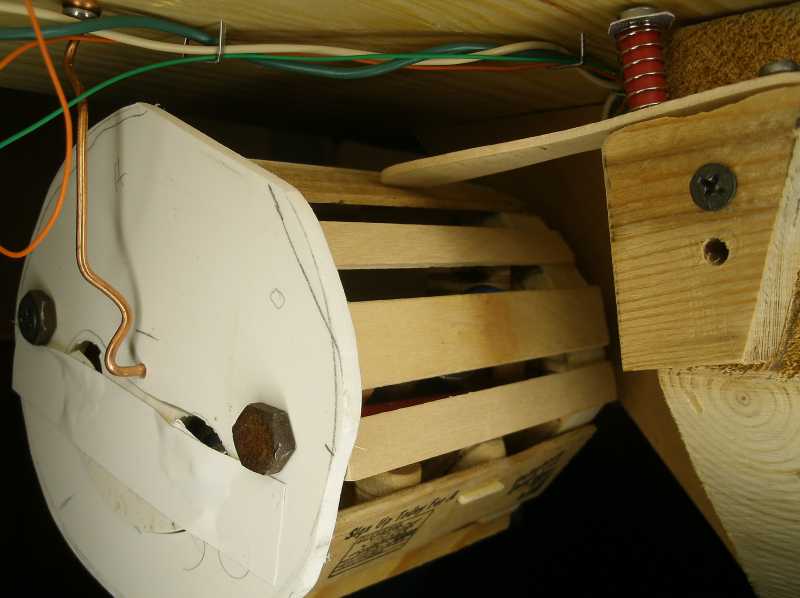
.
|
A locomotive rolls onto the pontoon, usually at less than 10 mph. It's a four-foot climb in just 40 feet, and then the bridge is pushed down level and floats deeper in the water. I would guess the engineer would have a real 'falling' sensation. The engineer and bridge tender watch and listen that all is well.
Before I had this noise machine, a train could sneak over this bridge with nary a sound |
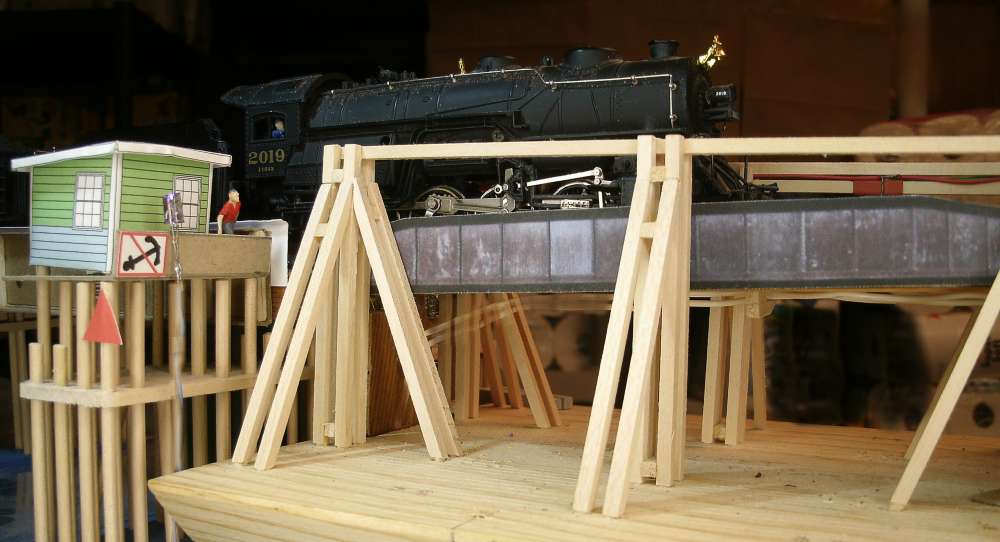
.
|
And as if an 'external' noise maker isn't enough, I cut 1/8 inch long gaps in the rail head to make the wheels clickity clack more as the train goes across the bridge. And every 12 scale feet, to match the spacing of the bridge supports where the track has to flex a lot where it is jacked and blocked to match the changing river water levels.
It's not as noisy a sound as I thought it would make, It makes for a rough ride for the track inspector on his bicycle velocipede. |
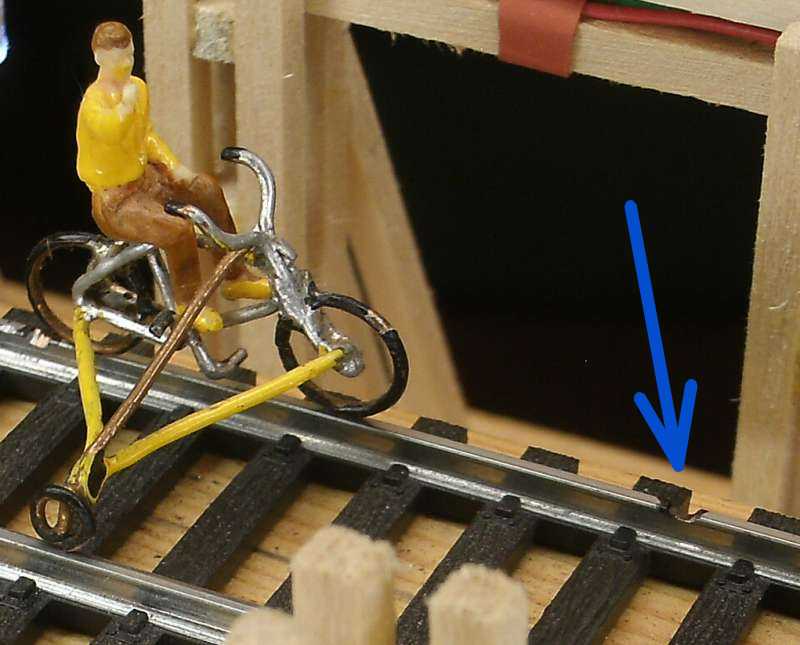
.
Here's my link to my older pages about my pontoon bridges:
Floating Pontoon Swing Drawbridge on my Milwaukee Road model train layout
to My Main Index Page on the TrainWeb site.
This page was wrote in October, 2022